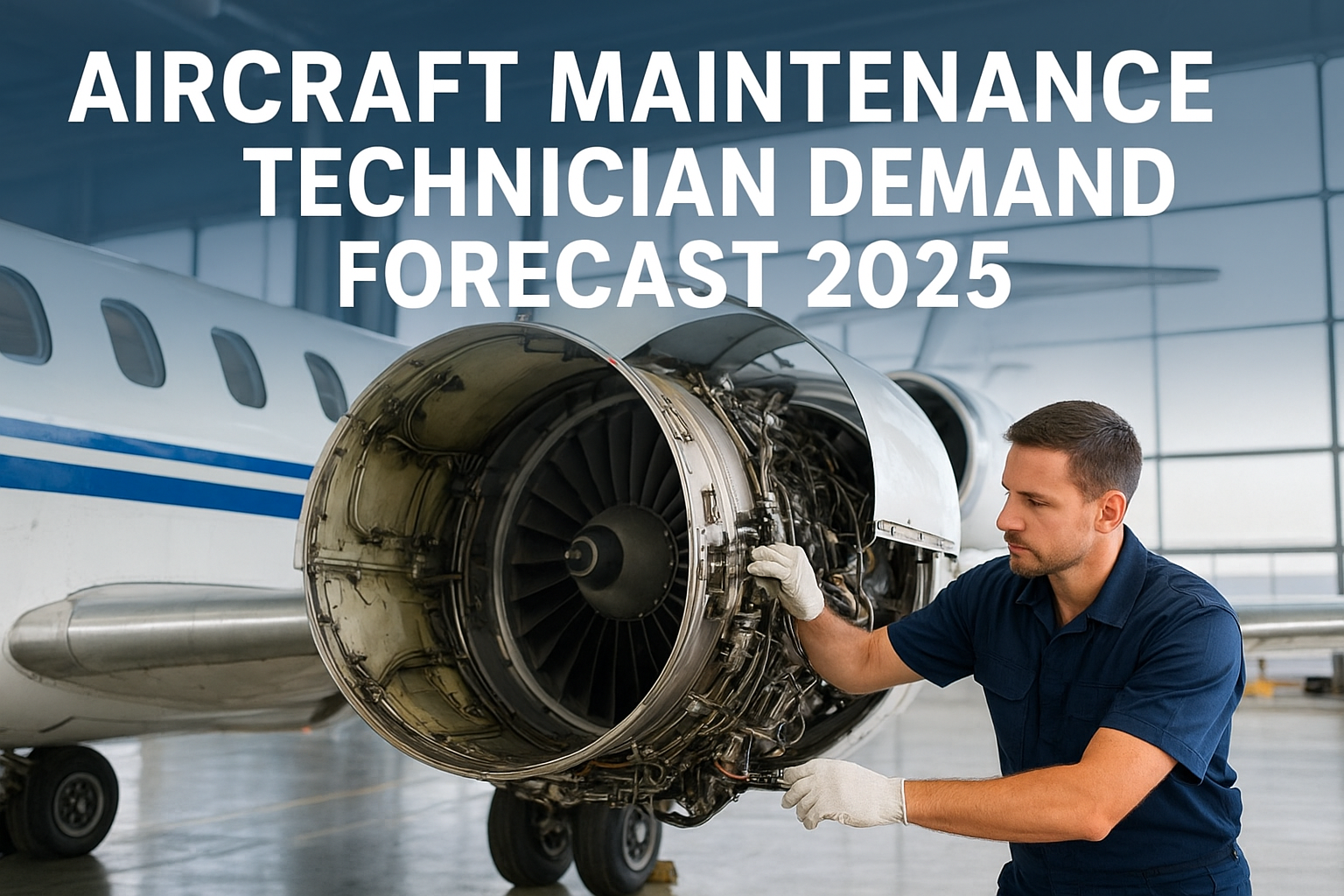In the world of aviation, it’s easy to get captivated by the roar of jet engines, the elegance of modern aircraft, and the groundbreaking technologies that shape flight. Yet behind every safe takeoff and landing lies the unseen dedication of Aircraft Maintenance Engineers (AMEs) and aviation technicians. As global air traffic continues to rise, the demand for skilled maintenance professionals is growing at a pace never seen before. The aviation industry is facing a pressing challenge: ensuring there are enough qualified hands to keep the skies safe.
The Growing Importance of Aircraft Maintenance
Aircraft maintenance is more than routine servicing; it is the backbone of aviation safety and reliability. Every component, from engines to avionics, must be inspected and maintained to the highest standards. With airlines expanding fleets and new players entering the skies, maintenance requirements are multiplying. Unlike other sectors, aviation has no room for error, which makes qualified maintenance professionals indispensable.
Rising Demand for Aircraft Maintenance Engineers
According to global aviation forecasts, air passenger traffic is expected to double in the next two decades. More passengers mean more flights, and more flights require more aircraft—and, critically, more maintenance staff. Industry experts estimate that by 2040, the aviation industry will need hundreds of thousands of new AMEs and technicians worldwide. This rising demand is driven by:
- Increasing air travel in emerging economies.
- Aging aircraft fleets require more frequent checks.
- Rapid advancements in aviation technology.
- Stringent global safety regulations.
This surge has positioned AMEs and maintenance technicians as some of the most sought-after professionals in aviation.
Why Maintenance Technicians Are Critical
While pilots and cabin crew are often in the spotlight, maintenance engineers work behind the scenes to ensure every journey is safe. They are responsible for:
- Conducting routine inspections and scheduled maintenance.
- Diagnosing and repairing technical issues.
- Certifying aircraft before they return to service.
- Ensuring compliance with international aviation standards.
Without these skilled professionals, global aviation would face delays, safety risks, and economic setbacks.
Global Shortage of Skilled AMEs
Despite the rising demand, the aviation industry is grappling with a shortage of certified maintenance technicians. Training programs are rigorous, often taking years of study and practical experience. The shortage is particularly pronounced in regions like Asia-Pacific, the Middle East, and parts of Europe, where aviation growth is outpacing the supply of qualified personnel. This creates immense opportunities for young aspirants to pursue careers as AMEs.
The Impact of Technological Advancements
Modern aircraft are becoming increasingly sophisticated, integrating digital systems, composite materials, and advanced avionics. This evolution requires maintenance engineers to constantly update their skills. The role of AMEs is no longer limited to mechanical work; it now extends to:
- Troubleshooting complex computer-driven systems.
- Working with predictive maintenance technologies powered by AI and IoT.
- Adopting eco-friendly maintenance practices to support sustainable aviation.
This technological shift makes ongoing training and certification essential for professionals in the field.
Opportunities for Young Professionals
For students and young professionals considering an aviation career, becoming an Aircraft Maintenance Engineer is a pathway filled with opportunities. The sector promises:
- High job security due to sustained global demand.
- Opportunities to work with leading airlines and aircraft manufacturers.
- The chance to contribute directly to passenger safety.
- Global career mobility, since AME certifications are recognized worldwide.
With airlines and maintenance organizations actively seeking skilled talent, the career outlook for AMEs has never been brighter.
Regional Demand Trends
Different regions are experiencing varying levels of demand for maintenance professionals:
- Asia-Pacific: Home to some of the fastest-growing airlines, requiring massive workforce expansion.
- Middle East: Aviation hubs like Dubai and Doha continue to expand, fueling demand for AMEs.
- Europe: A mix of aging fleets and regulatory standards increases the need for skilled technicians.
- North America: Steady demand driven by large fleet sizes and technological upgrades.
These regional trends highlight the global nature of the opportunity for aspiring maintenance professionals.
Training and Certification: The Pathway to Success
Becoming an AME is a journey that involves intensive training and licensing. Recognized aviation colleges and institutes provide the foundation, covering:
- Aerodynamics and aircraft systems.
- Hands-on training with real aircraft.
- Regulatory frameworks under DGCA, EASA, or FAA standards.
- Specialized courses in avionics, powerplants, and structures.
With the right training and dedication, students can build a rewarding and globally respected career.
The Future of Aircraft Maintenance
Looking ahead, the role of maintenance engineers will only grow more important. The aviation industry is entering an era of green aviation, smart technologies, and increased connectivity. Aircraft maintenance professionals will be at the forefront of:
- Supporting electric and hybrid aircraft.
- Incorporating AI-driven predictive maintenance systems.
- Developing eco-friendly repair and servicing techniques.
This future ensures that the profession remains dynamic, innovative, and essential.
Conclusion
The story of aviation is not complete without the dedication of maintenance engineers and technicians who keep aircraft airworthy. As global skies grow busier, the demand for these professionals is rising at an unprecedented pace. From ensuring passenger safety to adapting to technological advancements, AMEs are shaping the future of aviation. For students and professionals seeking a career that blends mechanical expertise with altitude-driven ambition, the world of aircraft maintenance offers unmatched opportunities. The future of aviation depends not only on pilots and planes but equally on the skilled hands and sharp minds working tirelessly behind the scenes.
At AMECollege, we understand that choosing the right aviation college can feel overwhelming. With so many DGCA-approved institutes across India, students often struggle to decide which one fits their career goals best. That’s where we step in to make the process simpler and more transparent for you.
Our platform is designed to guide students in finding the correct aviation colleges and understanding the unique strengths of each institute. Whether you’re aiming for mechanical or avionics specialization, we help you compare options, explore facilities, and align your choice with the demands of the aviation industry.
Most importantly, AMECollege helps you choose the right AME course in India, ensuring you take a confident step toward a career in aviation. With our support, you don’t just pick a college, you make an informed decision that sets the foundation for your success in one of the fastest-growing industries in the world.

















